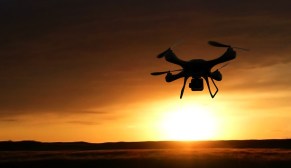Top Marine expects unmanned technology to spur change in designs of amphibs

The development and fielding of new unmanned systems will likely lead to changes in how the Marine Corps’ next generation of amphibious ships are designed, the service’s top officer said Thursday.
Future amphibs will need to be able to launch and recover a variety of robotic platforms — including aerial drones and surface and subsurface vessels — that the U.S. military intends to field, Commandant Gen. David Berger noted an event hosted by the Hudson Institute when asked for thoughts on what a future “LXX” amphib might look like.
“We’re going to use the amphibious ships we have right now in ways we have not used them in the past. Think unmanned. Okay, now think if you designed a ship that was designed with unmanned [platforms] in mind, what would that look like? Probably a little bit different,” he said.
If “you had a clean sheet of white paper here … what would that vessel look like? Probably different than what we have right now. So my point of departure is not the vessel we have right now [or] the next best version of it — it’s how do we think we’re going to need to operate in the future? What would that look like? My guess is more of them, [but] smaller” than today’s amphibs, he added.
Berger envisions amphibs as part of a larger network of launch and recovery sites for unmanned systems. But they don’t necessarily have to function as “motherships” for drones or other robotic platforms.
“To date, we primarily thought of amphibious ships somewhat like [aircraft] carriers where you leave the mothership and you come back to the mothership. We need to look at them as they’re part of a whole network of portable airfields, plus the fixed ones and harbors. So if we’re going to launch these unmanned platforms, they don’t need to come back to the same ship. They could go ashore, they could go to somebody else’s ship, they could go to an Australian ship,” he said.
Similarly, allied militaries could potentially land their drones on U.S. amphibs, he noted.
Not having to return to their launch sites could enable robotic systems to operate farther away from their point of departure.
“We can actually extend these ranges if we open crack our minds open a bit,” Berger said.
Drones could also potentially refuel other drones, further extending their range. “Technology wise, we’re not far” from being able to do that, Berger said.






